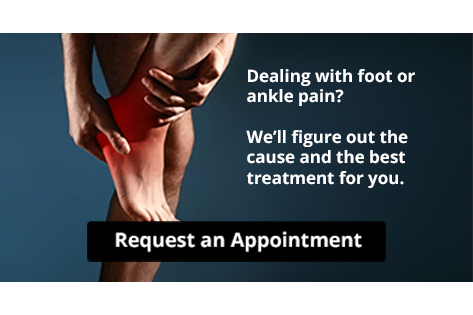Items filtered by date: June 2023
How Is Cuboid Syndrome Treated?
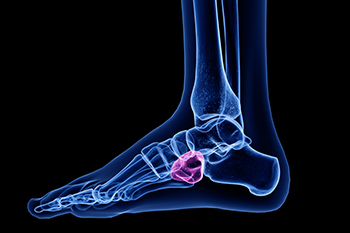
The cuboid bone is located on the outside of the foot, and cuboid syndrome can develop if this bone becomes injured or displaced. People who have suffered an ankle sprain may get cuboid syndrome, in addition to athletes who are involved in tennis or basketball. The quick stop and go of the foot while participating in these types of activities may cause the cuboid bone to shift. Cuboid syndrome may also affect ballet dancers who have poor alignment, possibly causing pressure on the foot. Common symptoms that many patients experience can include severe pain, and their gait, or walking pattern may be altered. Treatment can include wearing a specific type of orthotic and performing certain exercises several times throughout the day. Additionally, cuboid syndrome may be treated by manipulating the cuboid bone back into place. If you have foot pain, it is strongly suggested that you consult with a podiatrist who can accurately diagnose and treat cuboid syndrome.
Cuboid syndrome, also known as cuboid subluxation, occurs when the joints and ligaments near the cuboid bone in the foot become torn. If you have cuboid syndrome, consult with George Tellam, DPM from Ankle & Foot Associates. Our doctor will assess your condition and provide you with quality foot and ankle treatment.
Cuboid syndrome is a common cause of lateral foot pain, which is pain on the outside of the foot. The condition may happen suddenly due to an ankle sprain, or it may develop slowly overtime from repetitive tension through the bone and surrounding structures.
Causes
The most common causes of cuboid syndrome include:
- Injury – The most common cause of this ailment is an ankle sprain.
- Repetitive Strain – Tension placed through the peroneus longus muscle from repetitive activities such as jumping and running may cause excessive traction on the bone causing it to sublux.
- Altered Foot Biomechanics – Most people suffering from cuboid subluxation have flat feet.
Symptoms
A common symptom of cuboid syndrome is pain along the outside of the foot which can be felt in the ankle and toes. This pain may create walking difficulties and may cause those with the condition to walk with a limp.
Diagnosis
Diagnosis of cuboid syndrome is often difficult, and it is often misdiagnosed. X-rays, MRIs and CT scans often fail to properly show the cuboid subluxation. Although there isn’t a specific test used to diagnose cuboid syndrome, your podiatrist will usually check if pain is felt while pressing firmly on the cuboid bone of your foot.
Treatment
Just as the range of causes varies widely, so do treatments. Some more common treatments are ice therapy, rest, exercise, taping, and orthotics.
If you have any questions, please feel free to contact our offices located in Orange Park and Jacksonville Beach, FL . We offer the newest diagnostic and treatment technologies for all your foot care needs.
We Can Treat Your Foot or Ankle Pain
Why Your Feet Sweat and Smell Bad
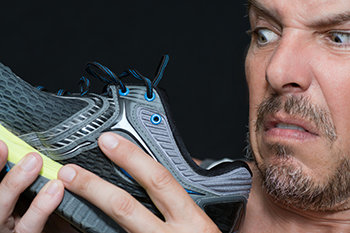
If you notice that your feet smell bad, it is likely caused by having sweaty feet. When the skin stays damp it invites bacteria, which thrive in moist, warm environments. When the bacteria grow, they break down the sweat and produce chemicals with a foul odor. The main cause of the odor is sweating in your socks and shoes and not allowing your feet to dry out. Common causes of sweaty feet include standing on the feet for long periods of time, wearing tight shoes that do not breathe, and wearing shoes that have not completely dried out. Other causes can include not changing your socks or washing your feet daily, certain hormonal changes, and a condition called hyperhidrosis. This condition causes the sweat glands to overproduce moisture. If you have both sweaty and malodorous feet, it is suggested that you seek the help of a podiatrist who is trained to deal with such ailments.
If you are suffering from hyperhidrosis contact George Tellam, DPM of Ankle & Foot Associates. Our doctor can provide the care you need to attend to all of your foot and ankle needs.
Hyperhidrosis of the Feet
Hyperhidrosis is a rare disorder that can cause people to have excessive sweating of their feet. This can usually occur all on its own without rigorous activity involved. People who suffer from hyperhidrosis may also experience sweaty palms.
Although it is said that sweating is a healthy process meant to cool down the body temperature and to maintain a proper internal temperature, hyperhidrosis may prove to be a huge hindrance on a person’s everyday life.
Plantar hyperhidrosis is considered to be the main form of hyperhidrosis. Secondary hyperhidrosis can refer to sweating that occurs in areas other than the feet or hands and armpits. Often this may be a sign of it being related to another medical condition such as menopause, hyperthyroidism and even Parkinson’s disease.
In order to alleviate this condition, it is important to see your doctor so that they may prescribe the necessary medications so that you can begin to live a normal life again. If this is left untreated, it is said that it will persist throughout an individual’s life.
A last resort approach would be surgery, but it is best to speak with your doctor to find out what may be the best treatment for you.
If you have any questions please feel free to contact our offices located in Orange Park and Jacksonville Beach, FL . We offer the newest diagnostic and treatment technologies for all your foot and ankle needs.
Reasons for a Tight Achilles Tendon
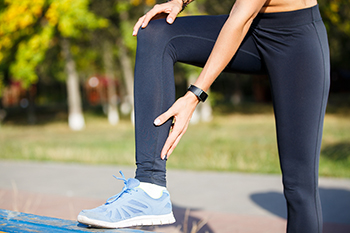
If you are an active person who frequently uses your legs, your Achilles tendon may feel tight. Wearing shoes with elevated heels, where the heel is higher than the ball of the foot, can shorten the muscles in the back of the leg. This feeling can be replicated by pointing your toes down. While active, this happens naturally, but when it is from shoes, it is an artificial shortening position that can cause tightness. Toe springs in shoes elevate the toes, hold them there without natural engagement, and shorten the muscles from the top of the foot. When the muscle running along the outside of the shinbone is tight, the surrounding muscles tighten up and the Achilles tendon is less likely to stretch and contract fully. Walking barefoot can restore foot function, allow toes to spread out, and build stronger feet, but this has its disadvantages as well. Wearing minimalist or barefoot shoes are alternative options that can be considered. An effective way to prevent the sensation of tightness in the Achilles tendon area is to stretch the legs and feet each day. Rolling a massage ball from the top to the bottom just outside the shin bone is a myofascial release that can relieve tightness. Deep squatting, with or without a wall as support, can also help. If you have a tight Achilles tendon that persists, it is suggested that you visit a podiatrist who can help you with additional treatment options.
Achilles tendon injuries need immediate attention to avoid future complications. If you have any concerns, contact George Tellam, DPM of Ankle & Foot Associates. Our doctor can provide the care you need to keep you pain-free and on your feet.
What Is the Achilles Tendon?
The Achilles tendon is a tendon that connects the lower leg muscles and calf to the heel of the foot. It is the strongest tendon in the human body and is essential for making movement possible. Because this tendon is such an integral part of the body, any injuries to it can create immense difficulties and should immediately be presented to a doctor.
What Are the Symptoms of an Achilles Tendon Injury?
There are various types of injuries that can affect the Achilles tendon. The two most common injuries are Achilles tendinitis and ruptures of the tendon.
Achilles Tendinitis Symptoms
- Inflammation
- Dull to severe pain
- Increased blood flow to the tendon
- Thickening of the tendon
Rupture Symptoms
- Extreme pain and swelling in the foot
- Total immobility
Treatment and Prevention
Achilles tendon injuries are diagnosed by a thorough physical evaluation, which can include an MRI. Treatment involves rest, physical therapy, and in some cases, surgery. However, various preventative measures can be taken to avoid these injuries, such as:
- Thorough stretching of the tendon before and after exercise
- Strengthening exercises like calf raises, squats, leg curls, leg extensions, leg raises, lunges, and leg presses
If you have any questions please feel free to contact our offices located in Orange Park and Jacksonville Beach, FL . We offer the newest diagnostic tools and technology to treat your foot and ankle needs.
Athlete’s Foot and Shower Floors
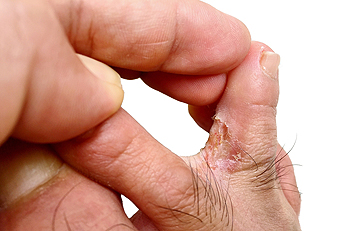
If you are a new college student or are the parent of one, it can be important for you to learn about the dangers of contracting athlete’s foot from shower floors. Many colleges and universities across the country provide students with communal showers. However, if a student uses one of these showers without wearing shower shoes, they may be making themselves more susceptible to developing athlete’s foot. Since the fungus that causes athlete’s foot thrives in environments that are warm and moist, communal shower floors are an ideal place for this fungus to live and spread. A student may consider wearing a kind of flip flops or water shoes while using communal showers to mitigate their risk of contracting athlete’s foot. To learn more about preventing athlete's foot, it is suggested that you schedule an appointment with a podiatrist today.
Athlete’s foot is an inconvenient condition that can be easily reduced with the proper treatment. If you have any concerns about your feet and ankles, contact George Tellam, DPM from Ankle & Foot Associates. Our doctor will treat your foot and ankle needs.
Athlete’s Foot: The Sole Story
Athlete's foot, also known as tinea pedis, can be an extremely contagious foot infection. It is commonly contracted in public changing areas and bathrooms, dormitory style living quarters, around locker rooms and public swimming pools, or anywhere your feet often come into contact with other people.
Solutions to Combat Athlete’s Foot
- Hydrate your feet by using lotion
- Exfoliate
- Buff off nails
- Use of anti-fungal products
- Examine your feet and visit your doctor if any suspicious blisters or cuts develop
Athlete’s foot can cause many irritating symptoms such as dry and flaking skin, itching, and redness. Some more severe symptoms can include bleeding and cracked skin, intense itching and burning, and even pain when walking. In the worst cases, Athlete’s foot can cause blistering as well. Speak to your podiatrist for a better understanding of the different causes of Athlete’s foot, as well as help in determining which treatment options are best for you.
If you have any questions please feel free to contact our offices located in Orange Park and Jacksonville Beach, FL . We offer the newest diagnostic and treatment technologies for all your foot and ankle needs.
